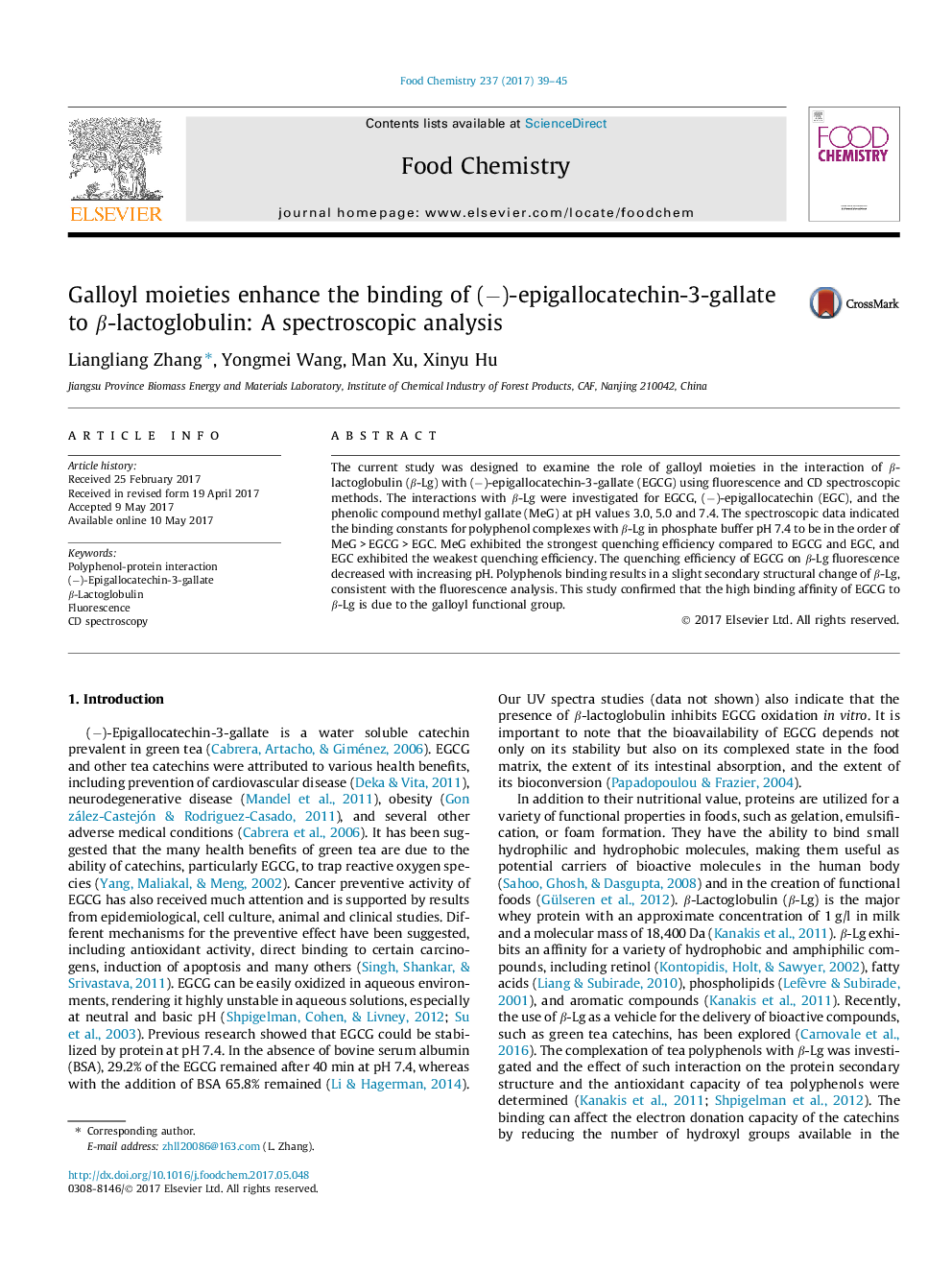| Article ID | Journal | Published Year | Pages | File Type |
|---|---|---|---|---|
| 5132699 | Food Chemistry | 2017 | 7 Pages |
â¢The role of galloyl moieties in the interaction of β-Lg with EGCG is examined using spectroscopic methods.â¢The binding constants for polyphenol complexes with β-Lg in pH 7.4 are in the order of MeG > EGCG > EGC.â¢The quenching efficiency of EGCG on β-Lg fluorescence decreased with increasing pH.â¢Polyphenol binding results in a slight secondary structural change of β-Lg.â¢The high binding affinity of EGCG to β-Lg is due to the galloyl functional group.
The current study was designed to examine the role of galloyl moieties in the interaction of β-lactoglobulin (β-Lg) with (â)-epigallocatechin-3-gallate (EGCG) using fluorescence and CD spectroscopic methods. The interactions with β-Lg were investigated for EGCG, (â)-epigallocatechin (EGC), and the phenolic compound methyl gallate (MeG) at pH values 3.0, 5.0 and 7.4. The spectroscopic data indicated the binding constants for polyphenol complexes with β-Lg in phosphate buffer pH 7.4 to be in the order of MeG > EGCG > EGC. MeG exhibited the strongest quenching efficiency compared to EGCG and EGC, and EGC exhibited the weakest quenching efficiency. The quenching efficiency of EGCG on β-Lg fluorescence decreased with increasing pH. Polyphenols binding results in a slight secondary structural change of β-Lg, consistent with the fluorescence analysis. This study confirmed that the high binding affinity of EGCG to β-Lg is due to the galloyl functional group.
